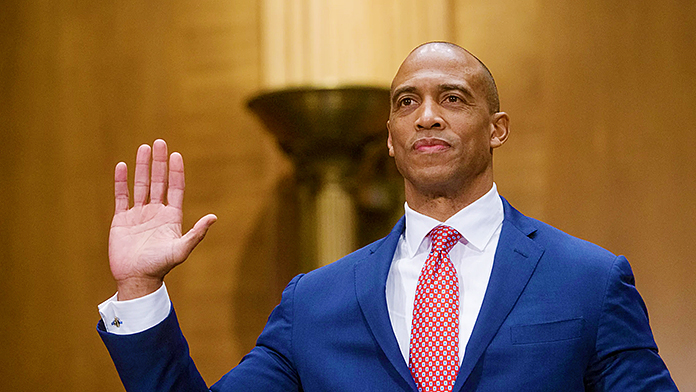SMART COMPANIES MINIMIZE THE NUMBER OF OLDER INDIVIDUALS IN THEIR WORKFORCE, ENCOURAGING EARLY RETIREMENT AND SEEKING YOUNG TALENT.
WORKING IN CORPORATIONS TODAY MEANS HIGH PRESSURE AND LONG HOURS — THAT’S JUST LIFE IN THE BIG LEAGUE.
MOST OF US WILL HAVE A FEW GOOD YEARS OF ACTIVE LIFE AFTER RETIREMENT, LONG ENOUGH FOR A CRUISE AND A FEW ROUNDS OF GOLF. WE WILL ALSO BE HAPPY TO REST.
All three statements are increasingly false. Smart companies look for ways to retain older workers and create work arrangements that allow contribution through a variety of time commitment and intensity. Most individuals enjoy significantly longer life expectancies and many already desire to work well past traditional retirement.
One of the most important challenges for HR leaders is to change the organization’s mental model of older workers to one that recognizes their need to reinvent rather than retire, and to reflect that in both the options companies offer and the underlying philosophy toward those in their 60s, 70s, and even 80s. Organizations should prepare for a workforce that will include a significant number of older workers — and an important element of that preparation is to help employees make the most of their later years.
It’s in corporation’s best interest to lay the groundwork to attract and welcome older talent. When the economy begins to pick up steam, employers will find that there are not be enough young workers to fill available jobs, particularly in areas that require a college education or specific skills. The U.S. economy now has the capacity to create more jobs even though low birth rates of the past several decades have not produced enough young workers to fill them.
To get ahead of the curve, smart organizations need to redesign work arrangements to bring them in line with older workers’ preferences.
To attract senior workers, corporations will have to offer options for contributing that move away from the high-pressure and long-hour model that is common today.
What many who are approaching traditional retirement age look forward to most is a reduction in the pressures of time and responsibility that have marked their “first careers.” One of the most popular preferences for second careers is to work cyclically — short phases of full-time work interspersed with periods of no work, at the individual’s discretion.
In “The Future of Retirement” study by Prospect Heights, Ill.-based HSBC, more than 40 percent of individuals between 18 and 50 in ten countries say they would like to work this way later in life.
But simply creating new work arrangements is not enough. To retain your organization’s best older talent and attract others, companies also need to become places that appeal to older individuals in ways that extend beyond flexible hours. The key is reinvention.
The sad reality is that the majority of people are not keen on their jobs. Many studies of engagement, including the 2006 Towers Perrin Global Workforce Study — Executive Report, “Winning Strategies for a Global Workforce,” conclude that about 20 percent of people love their work and are deeply engaged, another 20 percent are bitter, and about 60 percent fall in the middle — tolerant, but certainly not excited.
This reality is reflected in their plans for the next stage of work.
Most people today say they do want to work past traditional retirement ages, but they do not want to do exactly the same thing they are doing now. Many people are beginning to look at this third stage of life — after adolescence and one’s first career — as a gift of time.
It is a time to learn new things and to reinvest the skills and capabilities learned thus far in new projects. It’s a time for reinvention — for trying new paths and exploring options that you haven’t yet been able to pursue.
A paycheck is not the primary driver for participating in the workforce during one’s older years. Surveys show that people rank a desire to stay mentally and physically active and socially connected as more important reasons than money as they look forward to this new phase.
Many say they would like to do something quite different in their second career than they did in their first. According to AIG SunAmerica’s 2006 Re-Visioning Retirement Study, 60 percent of workers are thinking of entering a completely different line of work.
Nearly half (45 percent) would like to do something that results in giving back to their family and community. Even those who would like to continue in a similar field are eager for something new.
To support this trend and encourage top talent to channel this new- found energy for the benefit of business, companies should support and encourage two core practices for reinvention, beginning when employees are in their 50s or even 40s — when many are starting to consider “what’s next:” exploration and education.
Exploration
For most, considering new and interesting things to do is difficult.
Although we’ve all met people who were able to describe what sounded like a rational step-by-step career development path, the reality is that such clarity is often crafted with the benefit of hindsight. Many of the specific individual steps were triggered by encounters along the way — people met, conversations held, observations made.
Companies should encourage exploration of options within the organization. Encourage and facilitate connections throughout the company and beyond. Ensure that employees come in contact with interesting people around the organization and have options for learning about other roles.
Staying only within intimate circles of close colleagues– in the same department, doing the same work — does not present a full palette of alternatives. While such relationships tend to preserve stability and offer familiarity, insularity encourages individuals to conclude that in order to grow and learn, they need to get out of the corporation.
Education
Education is another important avenue for exploration. Provide older employees full access to educational opportunities that some reserve or target for only the young. Encourage them to learn new skills and broaden their horizons as to the options available.
Managers should urge older employees to keep a running list of possibilities — ideas of ways they might contribute to the company or areas that might be of interest “someday,” no matter how remote each possibility might seem. Consider for each whether there is something the company might do today to help the individual explore the idea further — to learn more about it or do it in a limited way.
Experiment
Facilitate in getting individuals to try new things in small steps.
Support them in trying something new, working with them to evaluate how well each possibility really fits with their needs and preferences. Almost no one gets it right the first time or in one big step. Finding a new set of satisfying activities is an iterative process.
One of the most important steps a company can take is redesigning career paths to allow more lateral movement. This will not– only benefit older workers allowing them to try new things within the corporation — but will also appeal to members of Generation X and Y who also like variety. Look for ways to create incremental roles that leverage existing skills, while requiring the development of new capabilities to fulfill some portion of the new role.
The years that lie ahead, traditionally devoted to retirement, are now an open invitation for reinvention — an entirely new life stage. We have never before experienced a sustained period of healthy, non-childbearing adulthood. The options for what we can do with this gift of time, the contributions that can be made and the economic value created, are up to us to discover.
Author: Tamara J Erickson
















